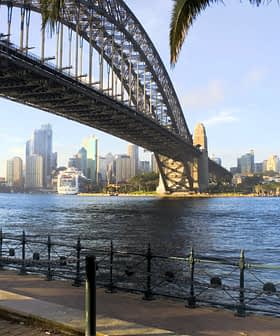Australian olive oil producers and farmers are reeling after sweeping floods and a cyclone have devastated most of the country. For many parts this is coming off the back of a harsh 15-year long drought, the worst recorded since settlement.

Hundreds of kilometers wide, Cyclone Yasi started as a tropical disturbance in Fiji and rapidly increased speed as it approached the shore of Australia, with the eye of the storm hitting the coast at Mission Beach in Queensland on February 2 destroying everything in its path from Townsville to Cairns and causing havoc as far inland as the Northern Territory, with floods even recorded in South Australia.
The category 5 cyclone was the most powerful cyclone to hit Australia in 100 years, bringing winds of 290 kph (180 mph), heavy rains and treacherous storm surges, with waves of more than six meters that swamped coastal towns.
Some affected areas are still completely isolated just over a week after the storm hit.
Meanwhile, Australia’s south-east is still assessing the damage after a month of floods that inundated much of Victoria, South Australia, New South Wales and Queensland.
President of the Australian Olive Association (AOA) Paul Miller said the effects of the floods and the unusual tropical rainfall are varied. “In Queensland there are some groves where the infrastructure has been seriously damaged,” he said. “In Victoria the flooding was more of an inconvenience restricting access to the groves.”
Mr. Miller said while the olive trees should be okay it is the olives they are worried about. “The overall effects of the bad weather will only be known at harvest this year. The worry is ongoing wet weather and anthracnose disease of the olives.”
Olive harvesting began in the north coast of New South Wales late last week, literally days after the storm.
Although Victorian growers are not due to harvest until late March, Mr. Miller said wet and humid weather is affecting fruit throughout south-east Australia. He said the trees should survive as long as the water is moving and passes quickly but if water is sitting around it will lose oxygen and the trees will die.
Losses have already been estimated at US$3.54 billion, with US$2.03 billion lost in agriculture, mining and local government, and US$1 billion lost in the tourism industry.
Agriculture was particularly hit hard, with farms affected across the country, many still inundated, trees felled across most of Queensland, while fears of near total devastation to the banana and sugar cane crops remain with initial estimates that damage to sugar cane alone could reach US$505 million, which sparked a 30-year high in sugar prices across the world.
AOA Queensland Director Amanda Bailey said she has been trying to contact as many growers in Queensland as she can to try to gain an idea of the impacts on Queensland’s olive industry.
She said so far there have been confirmed reports of a grove in the Lockyer Valley to the west of Brisbane losing about 60 tonnes of fruit, and a table olive processing facility where the facility went under in the flood. “Some of their trees literally floated away from their grove,” she said.
Ms. Bailey said many other growers were isolated at the time of the floods. “Yesterday, I had a confirmed report of a grower in the Atherton Tableland (west of Cairns) who had previously been devastated by Cyclone Larry and now Cyclone Yasi,” she said. “They are still assessing the damage but will need to rebuild much infrastructure and areas of their grove.”
The Queensland Government expects its top export industries could take months to recover from the impacts of January’s flooding and February’s cyclone.
Meanwhile, consumers in the affected region have been warned of price rises of up to 500 percent, as seen after Cyclone Larry in 2006.
But Australian supermarket chain Coles said last week that the impact of the floods and Cyclone Yasi on supplies will not stop it from further price reductions, which saw extra virgin olive oil prices cut by 56 percent in the previous two weeks, a move that was immediately duplicated by leading supermarket chain Woolworths.







